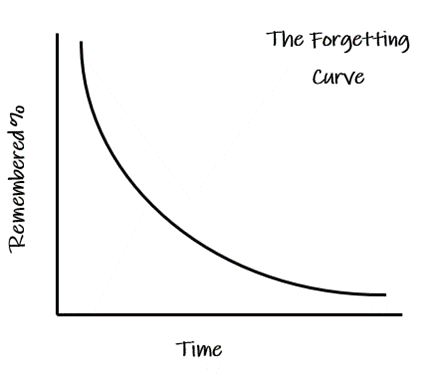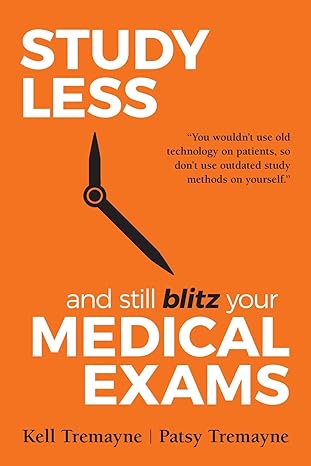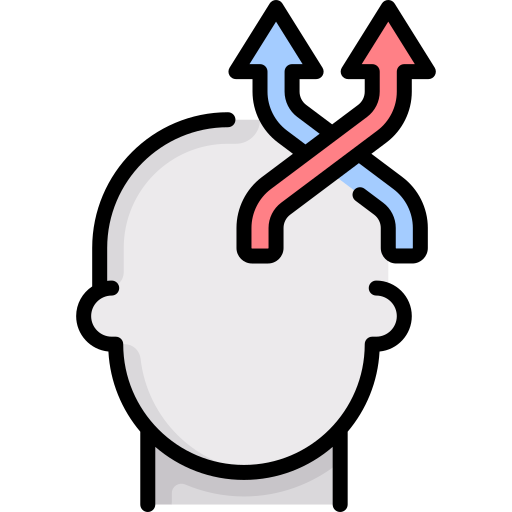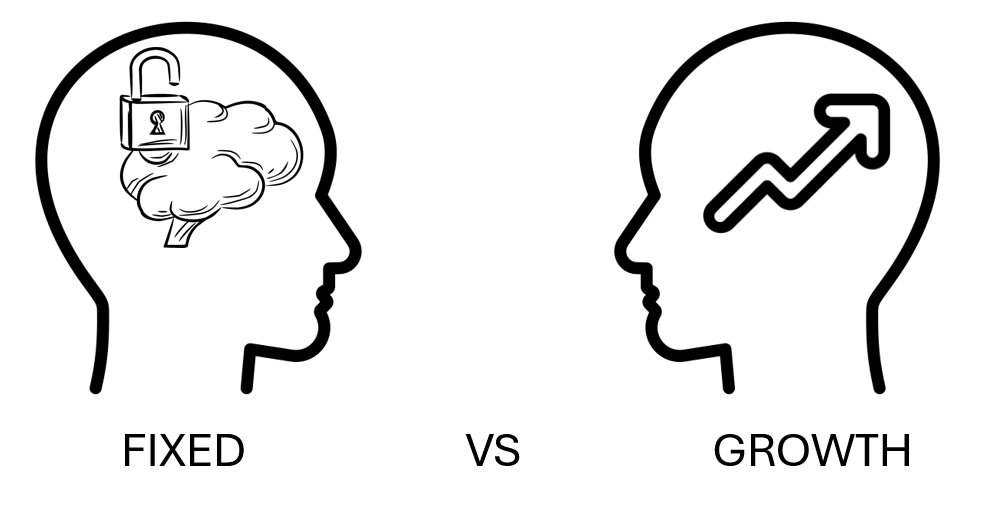- Home
- Study Smarter
- What is Distributed Practice
What Is Distributed Practice? Learn Smarter, Remember Longer
If you’ve ever wondered what is distributed practice, it’s a learning technique that involves spreading study sessions over time rather than cramming all at once. This method is based on a powerful psychological insight: we forget things quickly unless we actively work to retain them. Distributed practice helps interrupt the forgetting process just before information fades—strengthening recall and embedding knowledge into long-term memory.
The concept of what is distributed practice dates back to the 1880s, when German psychologist Hermann Ebbinghaus mapped the “forgetting curve.” His research showed how quickly we lose newly learned information and laid the foundation for modern memory science. Today, distributed practice is widely recognized as one of the most effective strategies for mastering complex material—especially in high-stakes fields like medicine, law, and engineering.
Distributed Practice vs. Cramming
Cramming is the opposite of distributed practice. It involves intense, last-minute study sessions that may help you remember facts temporarily—but almost guarantees rapid forgetting afterward. Cramming overloads your short-term memory and increases stress, while distributed practice builds long-term retention and reduces burnout.
If you’re asking what is distributed practice compared to cramming, the answer is simple: it’s a long-term strategy that helps you study smarter, not harder.
What is Distributed Practice and Why It Works
Understanding what is distributed practice means recognizing how memory works. The forgetting curve, first described by Hermann Ebbinghaus, shows that memory retention drops sharply within 24 hours of learning something new. Without review, up to 75% of material can be forgotten in a single day.
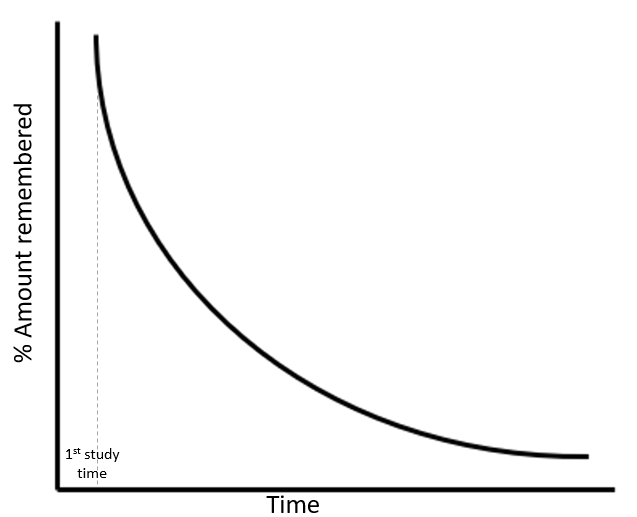
Distributed practice flattens the forgetting curve by strategically spacing out review sessions just before you're likely to forget the material. Each time you revisit the content, you reinforce the memory, making it more durable and harder to forget. Over time, this repeated reinforcement strengthens neural connections and slows the rate of forgetting.
Here’s how it works in practice:
- First exposure: You learn something new. Retention is high, but it begins to decline rapidly. This is similar to the graph above
- First review (Day 1 or 2): In this 2nd study session, you interrupt the forgetting process, boosting retention back up.
- Second review (Day 7): In this 3rd study session, the memory is now stronger, and the forgetting curve is shallower.
- Third review (Day 30): In this 4th study session, the memory becomes even more stable, and forgetting slows dramatically.
|
First Review (Day 1 or 2) 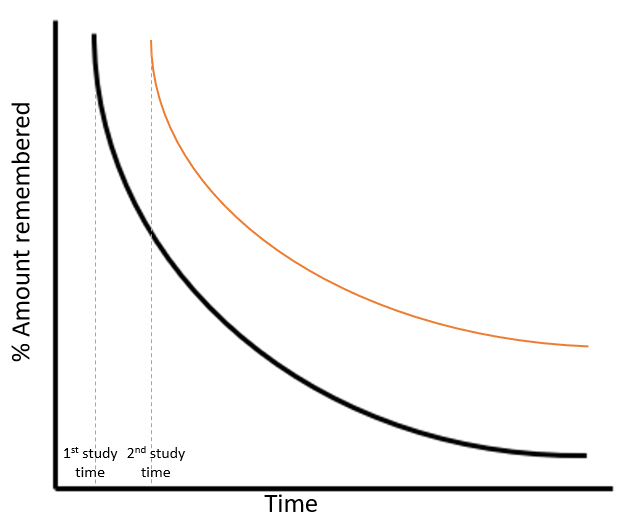 |
Second Review (Day 7) 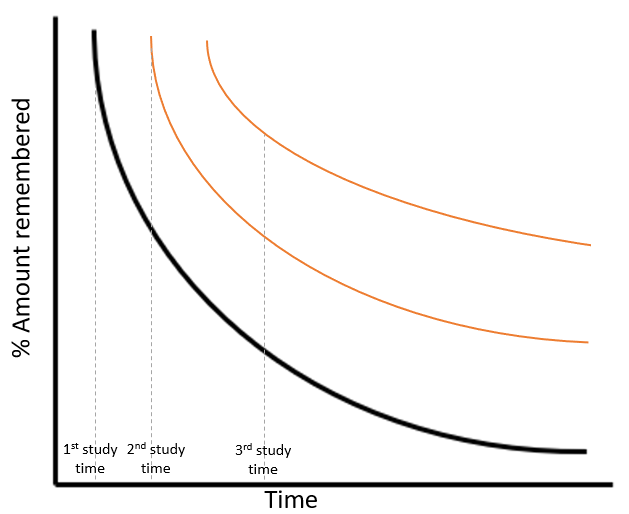 |
Third Review (Day 30)  |
By the third or fourth review, the information is often embedded in long-term memory, meaning you can recall it with minimal effort—even weeks or months later.
This is the essence of what is distributed practice: a method that works with your brain’s natural rhythms to make learning more efficient and lasting.
Real-World Example: Pedro’s Story
Pedro, a basic physician trainee, failed his written exams despite long hours of study. He was reading and highlighting but not retaining. After switching to distributed practice and active recall, he passed with confidence. He studied fewer hours, but with more structure and better results. His success wasn’t about working harder—it was about working with his brain, not against it.
How to Use Distributed Practice
Distributed practice works best when it’s structured and deliberate. Here’s how to implement it:
1. Break Content into Chunks
Divide your syllabus into manageable topics. Focus on high-yield areas first—those that are frequently tested or that you find most difficult.
2. Create Active Recall Prompts
Instead of rereading notes, create questions that force you to retrieve the information. For example, instead of writing “Causes of hypercalcaemia,” write “What are the top five causes of hypercalcaemia in adults?”
Here is an active recall study method you can apply today.
3. Schedule Reviews
Use a simple schedule like this:
- Day 1: Learn the material
- Day 2: Review for 15 minutes
- Day 7: Review again
- Day 30: Final review
You can do this manually or use apps like Anki or Quizlet to automate the process.
4. Track What You Forget
If you miss a question or struggle to recall it, shorten the interval before the next review. If you answer confidently, extend the interval. This adaptive approach ensures you spend more time on what you don’t know—and less on what you do.
Here are some ideas on creating a study schedule that maximizes retention.
5. Combine with Other Techniques
Distributed practice works best when paired with:
- Active recall (testing yourself)
- Deliberate practice (targeting weak areas)
- Study scheduling (protecting time for review)
What the Research Says
A 2020 study by Ebersbach and Nazari compared two groups of students: one used distributed practice over three days, and the other crammed all study into one day. Five weeks later, the distributed group outperformed the crammers on both familiar and new tasks. The conclusion? Distributed practice not only improves memory—it enhances your ability to apply knowledge in new situations.
Another meta-analysis by Dunlosky et al. (2013) found that distributed practice was one of the most effective learning strategies across all age groups and disciplines. It consistently outperformed rereading, highlighting, and summarizing.
Some Mistakes to Avoid
- Waiting Too Long to Review. Delaying reviews leads to forgetting and relearning. Tip: Review just before memory fades using a spaced schedule.
- Reviewing Everything Equally. Spending time on what you already know is inefficient. Tip: Focus on weak and high-yield topics.
- Using Passive Study Methods. Rereading isn’t enough to build strong memory. Tip: Use active recall like flashcards or self-quizzing.
- Ignoring Feedback from Your Reviews. Repeated mistakes mean your strategy needs adjusting. Tip: Review tough topics more often and switch formats.
What Can You Do Right Now
|
Tools that Can Help
|
If you’ve been wondering what is distributed practice and whether it’s worth your time—the answer is a resounding yes. It’s a scientifically validated, high-impact strategy that helps you retain more, stress less, and perform better. In a system that demands so much of your time and energy, distributed practice is one of the few tools that gives more than it takes.
References
Ebersbach, M., & Barzagar Nazari, K. (2020). Implementing distributed practice in statistics courses: Benefits for retention and transfer. Journal of Applied Research in Memory and Cognition, 9(4), 532–541. https://doi.org/10.1037/h0101860
Dunlosky, J., Rawson, K. A., Marsh, E. J., Nathan, M. J., & Willingham, D. T. (2013). Improving students’ learning with effective learning techniques: Promising directions from cognitive and educational psychology. Psychological Science in the Public Interest, 14(1), 4–58.
